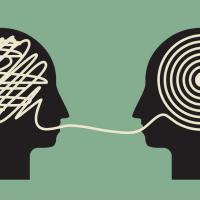Preventing Workplace Miscommunication

When one person says something that the other one misinterprets—a very common type of workplace miscommunication—the conversation often moves on with neither party realizing what happened. Fortunate are they who discover a misinterpretation and straighten it out before it escalates into a serious tangle.
For example, during the lunch break on the first day of a multiday seminar, Susana, one of the participants, asked Mandy, the seminar leader, “How’s it going for you?” Mandy’s response was, “Great—but I know what’s coming next.” To which Susana replied, “That sure sounds to me like a power play!”
That seemed to Mandy like an odd comment and an accusation about something she’d never do. Before Susana could walk away, Mandy asked her why she thought that comment was a power play. Susana explained that it sounded to her like Mandy was saying, “I know what’s coming next and you don’t, and after all, I’m the one in charge and you’re a mere participant, so deal with it.”
Mandy apologized and acknowledged that, from Susana’s perspective, that interpretation made perfect sense. Mandy explained that was not her intention at all. When she heard Susana ask how it was going for her, she was mentally propelled several years back to the lunch break of a seminar she had attended. At the time, she had felt very unsure of herself and had been fearful of what the afternoon would hold. So what she meant when she said “I know what’s coming next” was “I know what we’ll be doing this afternoon, and I feel so much more relaxed than in that stressful seminar years ago when I was frantic about what was next.”
Dissecting the interaction immediately cleared the air between the two of them. For Susana, Mandy’s response had been a Mandy-versus-Susana response. For Mandy, it was a Mandy-then-versus-Mandy-now response, sometimes referred to as reacting to then and there—another time and another place—rather than here and now. If you notice someone behaving in a way that seems excessive relative to the circumstances, that may be what’s happening; the person may be responding to then-and-there rather than here-and-now.
If you receive a puzzling response from someone, it may be worth stopping the conversation, as Mandy did, to explore what just happened. But if that’s not feasible, it can still be instructive to attempt to untangle the interaction yourself afterward to gauge where it might have gone awry. In doing so, you’d be improving your own ability to communicate.

